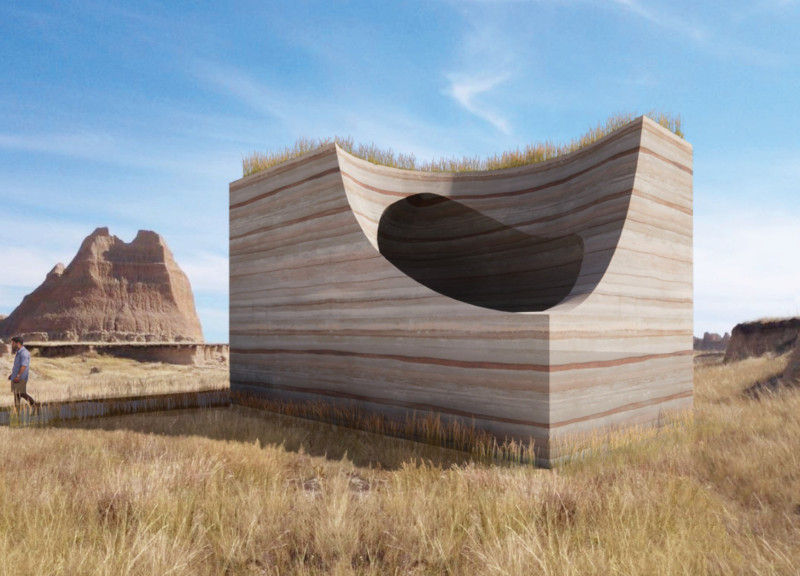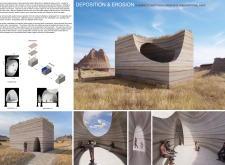5 key facts about this project
The rammed earth pavilion is situated along the Castle Hiking Trail in Badlands National Park, South Dakota. It serves as a resting point for visitors exploring the unique landscape of the park. The design embodies the natural processes of deposition and erosion, reflecting the geological narrative of the area. The building’s form and materials connect it directly to the surrounding environment.
Architectural Form
The pavilion features a rectangular shape crafted from layers of local soil that have been deposited and compacted over time, similar to the geological formations nearby. Negative spaces are purposefully created within the rectangular layout, suggesting the effects of erosion found in the Badlands. This design choice not only adds visual interest but also allows natural light to penetrate the interior and creates functional areas for visitors.
Structural Composition
Inside, the structure is defined by parabolic arches and ovals, which help to form walls and a roof made entirely of rammed earth. This specific material choice promotes a sense of cohesion and emphasizes the connection between the building and the earth it is made from. The design achieves a balance between a heavy presence and a sense of openness, creating a welcoming atmosphere.
User Experience
The pavilion is designed to connect visitors with the landscape. It frames views of both the earth below and the sky above, encouraging a deeper engagement with the natural surroundings. The strategic openings in the design allow light to filter through, enhancing the overall experience. This thoughtful approach ensures that visitors can pause and reflect while enjoying the unique scenery the Badlands offer.
The interplay of solid and soft qualities in the pavilion is evident through its sculpted spaces. These elements not only provide shelter but also respect the distinctive landscape. The final design resonates with the surrounding environment, reflecting its beauty while inviting visitors to take a moment to engage with the natural world.



















































